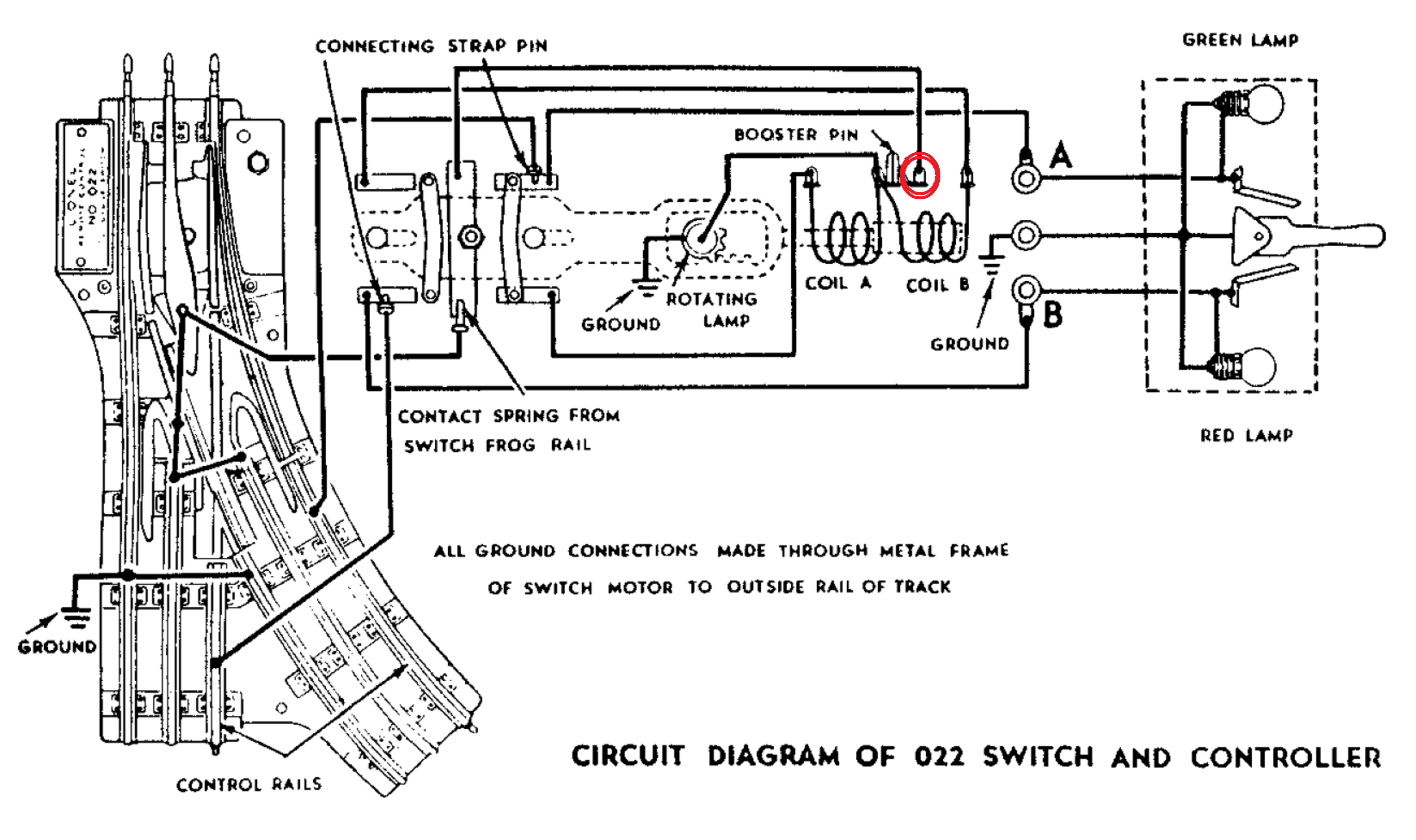After a train enters a certain spur, I’d like the 022 switch it just passed to change position so the next train won’t plow into the train parked in the spur.
I know I can use an insulated rail to make this happen, but I don’t want to disassemble tracks.
Can I accomplish this with the 153R, or is there a better way?
I was toying with this in my head, but the problem is, the "state" detection is a little more complicated.
#1 you don't want the switch to change while the train is driving in- meaning we cannot detect just after the switch as depending on if the train is short or long.
#2 You could sense far down on the spur closer to the end- but then it requires you always pull the engine all the way down to the sensing location
#3 You are ideally sensing the presence of the train, not just it passing as a constant state.
#4 catch 22, if this is a single ended siding, you need the IR sensor not to detect the train when exiting the siding as this would throw or maintain the switch in the wrong state.
#5 Most switches work such that the anti-derailing sensing function, and the remote control- is an "OR" state, one or the other can control, but never ever should we have them fighting state. In other words, if the IR is triggering for through, and anti-derailing senses "out" then we have a conflict.








